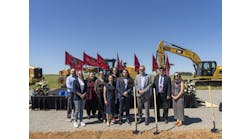By Elisa Wood
May 28, 2009
If you trust the television images, it appears that soon we will all drive cars the size of golf carts because of Obama’s new fuel standards. Newscast after newscast illustrated the new 35.5 CAFÉ (Corporate Average Fuel Economy) standard with a two-seater microcar. In some cases the image was juxtaposed with a threatening-looking SUV, usually black — Darth Vader on his way to crush the rebellion.
The message? Be afraid. Be very afraid. And to be honest, I was. My first thought? There is no way my kids are getting in a microcar.
Since then, however, I’ve looked into safety and small cars. True, small cars can be unsafe – but not necessarily.
Greencar.com offers an informative article by Kellen Schefter http://www.greencar.com/articles/smart-car-offers-drivers-new-high-mpg-option-top-crash-rating.php. Shefter describes crash tests by the Insurance Institute for Highway Safety on Daimler AG’s 2008 smart fortwo. It is not as destructible as the golf cart it resembles. On the contrary, the smart fortwo earned the institute’s best ratings for front and side crash protection. For rear crashes, it was rated acceptable.
Schefter explains the technology behind the car’s crashworthiness. The smart fortwo is built to distribute the impact of a crash over its entire body; the rear-mounted engine breaks away and slides underneath the car if it is hit from behind, “absorbing energy and reducing the rebound inherent in such a stiff structure.” And the car has a short wheelbase so that in a side collision, it is more likely to hit an energy-absorbing axle.
In any case, we may not need small cars to meet fuel efficiency standards, according to the Rocky Mountain Institute. But the cars will need to be light. Lack of vehicle weight is typically linked to poor crash performance. RMI says, however, that light weight, like small size, need not mean danger on the road. The organization plans to issue a study in July that illustrates how big cars made out of light materials can have “crash safety comparable to, or better than, that of a similarly sized heavy vehicle,” according to a paper RMI recently posted on its website. Safety depends on good engineering. Because the engines need not be so big in the light car, “the crumple zone” can be larger, creating greater safety, RMI says. http://www.rmi.org/sitepages/pid603.php.
Still, the biggest challenge for the car industry may not be one of engineering, but psychology. Can marketing efforts overcome what Schefter calls the “bigger-is-better intuition” of the safety-minded American car buyer? As I think about my kids in a microcar, I realize that I’ll be a good test case.
Visit Elisa Wood at www.realenergywriters.com and pick up her free Energy Efficiency Markets podcast and newsletter.






